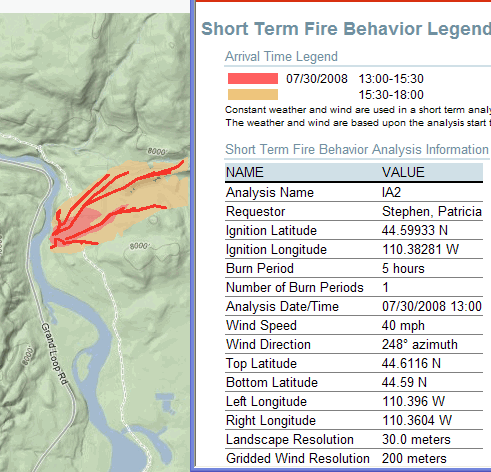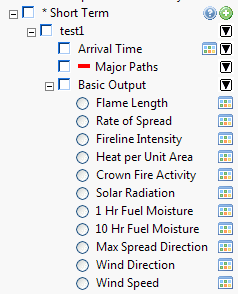Analyst-Assisted STFB - What it does (outputs)
Using the analysis start date, WFDSS retrieves the previous days (number determined by FBS on General Information page) of RAWS data, as well as National Weather Service (NWS) Forecast Data to conditioning the fuel moisture (of dead fuels) for each cell of the landscape extent. The WFDSS Short-Term Fire Behavior (STFB) uses dead fuel moistures that have been calculated by the analysis start date and time and the forecasted wind information for the simulation duration to calculate and display two fire spread outputs:
- Arrival Time: Represents the number of hours it takes the fire to reach that location on the landscape from the ignition source.
- Major Paths: Shows only the most significant fire spread pathways.

In addition to the fire spread outputs described above, when a STFB analysis is conducted, Basic Fire Behavior (BFB) "snap shot in time" outputs are also calculated for the defined landscape extent using the start date and time. You can select and display these results on the analysis map. Notice the color palette next to each output; this is the output legend.
Note: The Wind Direction and Wind Speed outputs are a product of WindWizard. These 20' gridded wind values are used as an input for STFB, but STFB itself does not produce wind direction or wind speed outputs.

-----------
Last updated on 12/30/2021 1:07:54 PM.
In This Section |
See Also |
Reference |